It was in 1066 that a coup put the just and temperate 16 year old teen Kanafa Dyula in place as the emir of Manding. Kamrupi by birth, he had been traded to the region as a slave and picked up an Iberian Sunni variant of Islam along the way (as well as losing an eye). Being familiar with the art of handling elephants, he was able to do what some thought impossible and tame some of the elephants of Africa. The faithful who would later follow him would say the gods gifted the elephants intelligence so that they could understand him. What no one doubts is that Kanafa himself was gifted with great intelligence, though also cursed with insanity.
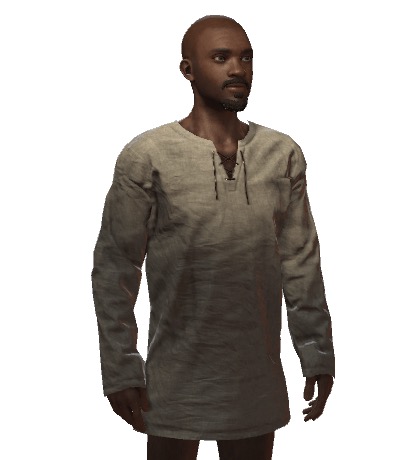
Kanafa, Man of Glass, 1050-1119
He would build gold mines to fund an elephant-based army which, along with light cavalry and archers trained in his traditions, would become the core of the Dyula army for centuries to come. He conquered land to the southwest, reaching the Atlantic, in hopes of building elephantry buildings in the jungles, but this would be impossible with the difficulty he still faced in taming most African elephants. He brought with him a communal mindset which lead to his realm becoming collectivized, uniting the people's motives towards the benefit of all. He chose as his house's motto "The elephant falls before the sword".
As he got older, his mind would prove increasingly warped, but this insanity seemed to be behind his greatest genius. For example, he began to believe he was made of glass, inspiring him to build a house of glass, which was incredible for growing vegetables - giving him the nickname "Man of Glass". Even more notably, however, he eventually took the bold move of forbidding clothing of any sort in his court.
What followed this nudity demand was what his enemies called delusion but what the faithful call divine inspiration. He modified his belief system to fit the idea that God was the same god who had been known as Saturn to the Romans and Ba'al Hammon to the Carthaginians. To him, when Israel lost its way, the Carthaginians had become the new chosen people, and when the Carthaginians were destroyed by Rome, the Romans would follow, and then when the Romans went astray from the words of Jesus the Arabs would follow them, and the Andalusians as the Umayyads fled there, and now with the Caliphate of Cordoba gone... he was next. From Jerusalem to Carthage to Rome to Mecca and Medina to Cordoba, now to Niani.
Kanafa did not believe in only this one god, however. The devil existed as a being meant to be rebellious and test both his divine father and their subjects - equivalent to Mercury. And Ba'al Hammon had a wife, who he figured must have been Tanit, and if she was also Mercury's mother, must be equivalent to the Greek Maia.
Such began his theology, a creature radically different from all Abrahamic sects before him, believing in a trinity of Hammon, Maia, and the devil. He considered adultery, witchcraft, sadomasochism, and same-sex relationships to all be okay - the latter being no shock as he was bisexual. He advised all followers to go without clothing just as he demanded of his court, and to this day the faithful have heeded their prophet's advice.
Kanafa's heart would give in at 69 after a transformative life. As his health declined, he had most of his descendants executed in a fit of madness, causing him great pain as he realized what he'd done. When he passed, his daughter Yajiyavati would succeed him at 32.
Yajiyavati was temperate and just, just like her father, but more humble than him. She united the House of Dyula into a witch coven, expanded widely to form the grand emirates of Mali and Guinea, and formed the Mujahideen of Jelibakoro. She is remembered as the one who began the Dyulas' true conquest legacy.

Yajiyavati, 1086-1172
But cancer would take her at 86. Her honest, just, and calm son Susthitavarman would succeed her at 42. Living until 63, he would focus much of his energy on building.
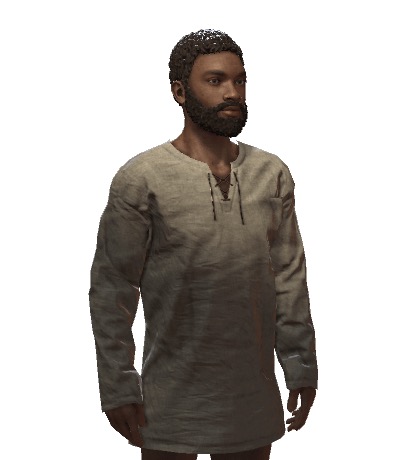
Susthitavarman, 1130-1193
Susthitavarman had a shorter rule than his predecessors and thus accomplished less, but he would be succeeded by a man who would have very different fortunes, as his niece-wife had bore him Sulayman, his brave, humble, and diligent son. Only 15 when he took the throne, Sulayman would live to 75, giving him plenty of time to conquer... well, essentially the entirety of the far western parts of Africa, as far north as Morocco, making him the first King of Kings in Mali. Under him, his Malinke culture would largely fuse with that of the Kru.
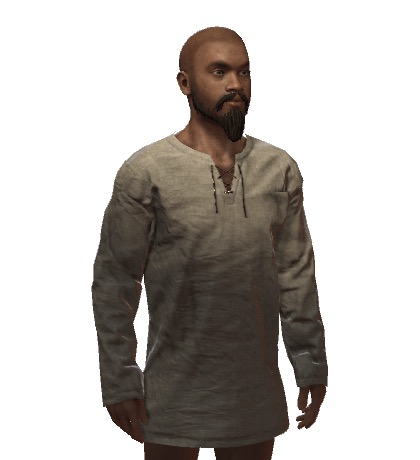
Sulayman, 1178-1253
His heir would be his 47 year old daughter, Nayanadevi the Impaler. Nayanadevi was generous and humble, but also famously sadistic. Making her way into Andalusia, under her the Dyulas finally held their holy city of Cordoba, which was the center of their direct rule in Spain. Many Amazighs moved into Mali under her rule, making the primary culture of Mali increasingly Amazigh to the point that her line started to view themselves as Amazigh.
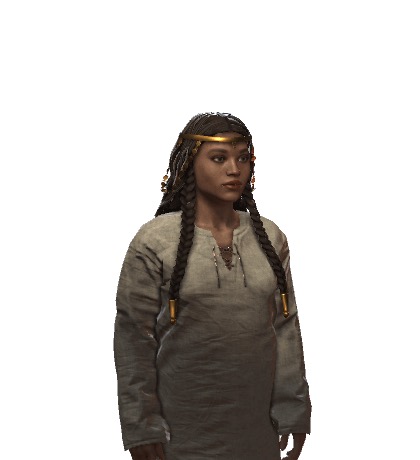
Nayanadevi the Impaler, 1206-1286
Nayanadevi would die at 80, being succeeded by a daughter she'd had with her half-brother, Lurpu the Blood-Mother, who was temperate, diligent, and sadistic. Taking the throne at 38, Lurpu's reign was relatively unexciting, moving further into Spain and the Maghreb. She died at 80.
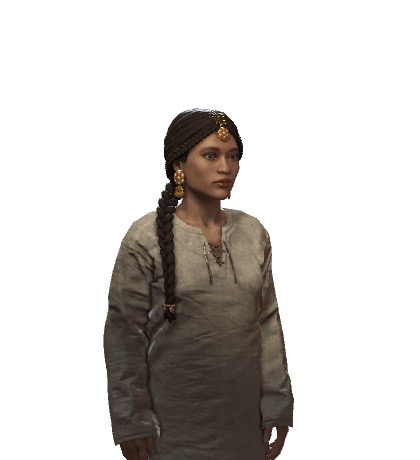
Lurpu the Blood-Mother, 1247-1327
Z'diant the Scholar, who was impatient, callous, yet generous, would be the next great conqueror in the Dyula line, taking the throne at 39. She declared herself emperor of Spain, took Africa to the east and held Carthage under her rule once again, moved into southern Italy and took Rome itself (which became the center of their direct rule in Italy), and moved north through France into parts of England. Under her rule, Amazigh-Andalusian people from Spain would settle heavily in Mali, and with them a new culture fusing into that of the Malinkes yet again, and many people started to speak in Amazigh tongues, including the royal court.
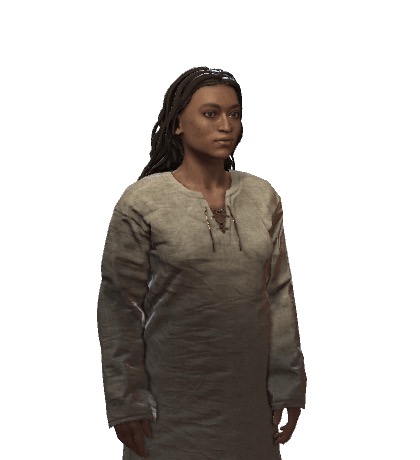
Z'diant the Scholar, 1288-1367
It was then that terrible news came - the pope had personally called for all of Catholicism to land on English shores and take the Dyulas' English realm. She fought valiantly against the Catholic hordes, eventually forcing them out of her conquered territory. The Dyulas were safe... for now.
After her death at 79, Dolo the Scholar would take the throne, then already 55 and generous, temperate, and sadistic. He was the first Dyula ruler to be a descendant of Muhammad. His expansion would take him into Aquitaine, as he would avenge the Battle of Tours in the name of his gods, as well as all of Ireland, which by this point included Iceland. France was added to Mali and Spain as the third main realm in the hands of the Kings of Kings in Mali. It was during his rule that the Catholics returned with another crusade, but they again failed to wrest southern England from the Dyulas.
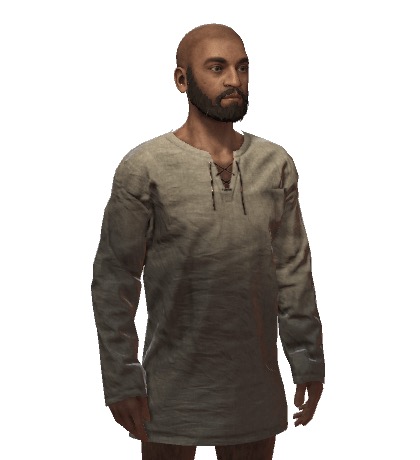
Dolo the Scholar, 1312-1401
Dolo would die at 89, succeeded by his son Dawud the Scholar, who was only 26 and was generous, temperate, and sadistic. He would take the rest of England as well as Songhay, but his main claim to fame was conquering all of Italy, making Italy the fourth realm he ruled over as King of Kings and forcing the pope to convert to the Dyulas' belief system, thus completely destroying the Catholic papacy and ensuring that no further crusades could be called. A slight bit of Italy would be lost as his vassal in Verona would be elected the first non-Christian Holy Roman Emperor, though the empire was dying and that of the Dyulas certainly was not. Under his rule, even more Andalusians would move to Mali and help shape the evolving culture of the Dyula heartland, which by now spoke Andalusian Arabic (including the imperial court with Classical Arabic).
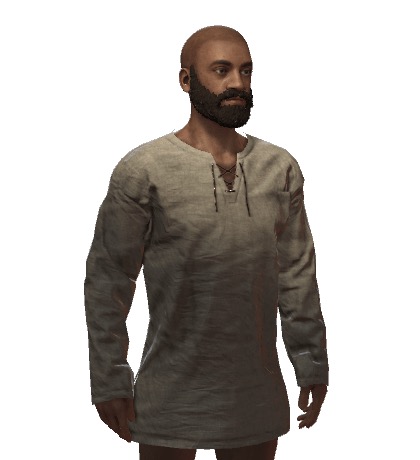
Dawud the Scholar, 1375-1435
His life was cut short at 59 by his bad habit of using the whip to torture himself. His giant daughter with his half-sister would take the throne at an even younger age than he had, only being 21. Her name was Jeddjiga the Wise, a brave and generous yet wrathful and sadistic ruler. She would take down Scotland, forming Britain as the fifth realm she ruled over as Queen of Kings. Her most notable achievement was moving her court to Cordoba, a more central capital and heart of Andalusia, which had been so culturally influential. The new capital at Cordoba quickly became a haven for the collectivist culture back in Mali.
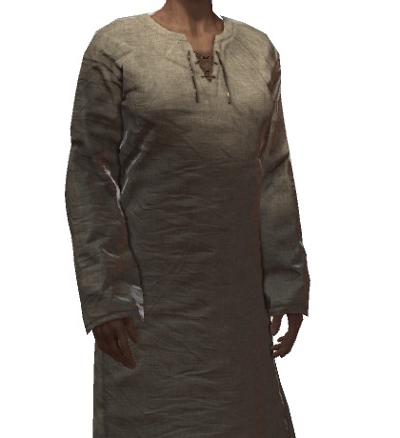
Oops! Too tall.
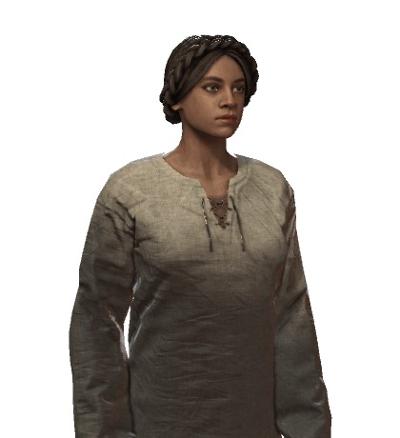
Jeddjiga the Wise, 1413-
Which is where our story leaves us. The seven most prestigious vassals with their own courts and languages are Ayneha-speaking Songhay, Iberian-speaking Aragon, D'Oc-speaking Aquitaine, D'Oil-Speaking France, Norse-speaking Ireland, Norse-speaking Alba, and Croatian-speaking Sicily. The Dyulas boast 340 bombards, 1700 Indian-inspired archers, 1700 Spanish-inspired cavalry, and 2,125 war elephants.
Regarding inventory artifacts: The crown is cashed the Blessed Magnificent Crown. The regalia, Deye’s Regalia, is dedicated to a courtier named Hawa. The weapon, illustrious in fact, is the Magnificent War Hammer. The four trinkets include a fine book about books, a book about how to worship Iblis, a pressed orchid, and a four player chess board.
The armor - I kid you not - is one I picked up in a war called the Invincible Shiny Egyptian Powerful Laminar Armor of Patience.
As for court artifacts, the Blessed Magnificent throne is the throne of the throne room. Furniture insides an armillary sphere and a statue. Three tapestries, two hides from a hare and a rabbit, and a bear skull line the walls. There is an intrigue book called “Aim to Please” and a propaganda book on some other house. The throne room’s center is marked by a crown called Jaida’s Crown dedicated to someone called Indrapala, another crown called the Dyula Crown, the skull crown of Charlemagne, and keys to the Kaaba.
And now, screenshots in the attachments.

Kanafa, Man of Glass, 1050-1119
He would build gold mines to fund an elephant-based army which, along with light cavalry and archers trained in his traditions, would become the core of the Dyula army for centuries to come. He conquered land to the southwest, reaching the Atlantic, in hopes of building elephantry buildings in the jungles, but this would be impossible with the difficulty he still faced in taming most African elephants. He brought with him a communal mindset which lead to his realm becoming collectivized, uniting the people's motives towards the benefit of all. He chose as his house's motto "The elephant falls before the sword".
As he got older, his mind would prove increasingly warped, but this insanity seemed to be behind his greatest genius. For example, he began to believe he was made of glass, inspiring him to build a house of glass, which was incredible for growing vegetables - giving him the nickname "Man of Glass". Even more notably, however, he eventually took the bold move of forbidding clothing of any sort in his court.
What followed this nudity demand was what his enemies called delusion but what the faithful call divine inspiration. He modified his belief system to fit the idea that God was the same god who had been known as Saturn to the Romans and Ba'al Hammon to the Carthaginians. To him, when Israel lost its way, the Carthaginians had become the new chosen people, and when the Carthaginians were destroyed by Rome, the Romans would follow, and then when the Romans went astray from the words of Jesus the Arabs would follow them, and the Andalusians as the Umayyads fled there, and now with the Caliphate of Cordoba gone... he was next. From Jerusalem to Carthage to Rome to Mecca and Medina to Cordoba, now to Niani.
Kanafa did not believe in only this one god, however. The devil existed as a being meant to be rebellious and test both his divine father and their subjects - equivalent to Mercury. And Ba'al Hammon had a wife, who he figured must have been Tanit, and if she was also Mercury's mother, must be equivalent to the Greek Maia.
Such began his theology, a creature radically different from all Abrahamic sects before him, believing in a trinity of Hammon, Maia, and the devil. He considered adultery, witchcraft, sadomasochism, and same-sex relationships to all be okay - the latter being no shock as he was bisexual. He advised all followers to go without clothing just as he demanded of his court, and to this day the faithful have heeded their prophet's advice.
Kanafa's heart would give in at 69 after a transformative life. As his health declined, he had most of his descendants executed in a fit of madness, causing him great pain as he realized what he'd done. When he passed, his daughter Yajiyavati would succeed him at 32.
Yajiyavati was temperate and just, just like her father, but more humble than him. She united the House of Dyula into a witch coven, expanded widely to form the grand emirates of Mali and Guinea, and formed the Mujahideen of Jelibakoro. She is remembered as the one who began the Dyulas' true conquest legacy.

Yajiyavati, 1086-1172
But cancer would take her at 86. Her honest, just, and calm son Susthitavarman would succeed her at 42. Living until 63, he would focus much of his energy on building.

Susthitavarman, 1130-1193
Susthitavarman had a shorter rule than his predecessors and thus accomplished less, but he would be succeeded by a man who would have very different fortunes, as his niece-wife had bore him Sulayman, his brave, humble, and diligent son. Only 15 when he took the throne, Sulayman would live to 75, giving him plenty of time to conquer... well, essentially the entirety of the far western parts of Africa, as far north as Morocco, making him the first King of Kings in Mali. Under him, his Malinke culture would largely fuse with that of the Kru.

Sulayman, 1178-1253
His heir would be his 47 year old daughter, Nayanadevi the Impaler. Nayanadevi was generous and humble, but also famously sadistic. Making her way into Andalusia, under her the Dyulas finally held their holy city of Cordoba, which was the center of their direct rule in Spain. Many Amazighs moved into Mali under her rule, making the primary culture of Mali increasingly Amazigh to the point that her line started to view themselves as Amazigh.

Nayanadevi the Impaler, 1206-1286
Nayanadevi would die at 80, being succeeded by a daughter she'd had with her half-brother, Lurpu the Blood-Mother, who was temperate, diligent, and sadistic. Taking the throne at 38, Lurpu's reign was relatively unexciting, moving further into Spain and the Maghreb. She died at 80.

Lurpu the Blood-Mother, 1247-1327
Z'diant the Scholar, who was impatient, callous, yet generous, would be the next great conqueror in the Dyula line, taking the throne at 39. She declared herself emperor of Spain, took Africa to the east and held Carthage under her rule once again, moved into southern Italy and took Rome itself (which became the center of their direct rule in Italy), and moved north through France into parts of England. Under her rule, Amazigh-Andalusian people from Spain would settle heavily in Mali, and with them a new culture fusing into that of the Malinkes yet again, and many people started to speak in Amazigh tongues, including the royal court.

Z'diant the Scholar, 1288-1367
It was then that terrible news came - the pope had personally called for all of Catholicism to land on English shores and take the Dyulas' English realm. She fought valiantly against the Catholic hordes, eventually forcing them out of her conquered territory. The Dyulas were safe... for now.
After her death at 79, Dolo the Scholar would take the throne, then already 55 and generous, temperate, and sadistic. He was the first Dyula ruler to be a descendant of Muhammad. His expansion would take him into Aquitaine, as he would avenge the Battle of Tours in the name of his gods, as well as all of Ireland, which by this point included Iceland. France was added to Mali and Spain as the third main realm in the hands of the Kings of Kings in Mali. It was during his rule that the Catholics returned with another crusade, but they again failed to wrest southern England from the Dyulas.

Dolo the Scholar, 1312-1401
Dolo would die at 89, succeeded by his son Dawud the Scholar, who was only 26 and was generous, temperate, and sadistic. He would take the rest of England as well as Songhay, but his main claim to fame was conquering all of Italy, making Italy the fourth realm he ruled over as King of Kings and forcing the pope to convert to the Dyulas' belief system, thus completely destroying the Catholic papacy and ensuring that no further crusades could be called. A slight bit of Italy would be lost as his vassal in Verona would be elected the first non-Christian Holy Roman Emperor, though the empire was dying and that of the Dyulas certainly was not. Under his rule, even more Andalusians would move to Mali and help shape the evolving culture of the Dyula heartland, which by now spoke Andalusian Arabic (including the imperial court with Classical Arabic).

Dawud the Scholar, 1375-1435
His life was cut short at 59 by his bad habit of using the whip to torture himself. His giant daughter with his half-sister would take the throne at an even younger age than he had, only being 21. Her name was Jeddjiga the Wise, a brave and generous yet wrathful and sadistic ruler. She would take down Scotland, forming Britain as the fifth realm she ruled over as Queen of Kings. Her most notable achievement was moving her court to Cordoba, a more central capital and heart of Andalusia, which had been so culturally influential. The new capital at Cordoba quickly became a haven for the collectivist culture back in Mali.

Oops! Too tall.

Jeddjiga the Wise, 1413-
Which is where our story leaves us. The seven most prestigious vassals with their own courts and languages are Ayneha-speaking Songhay, Iberian-speaking Aragon, D'Oc-speaking Aquitaine, D'Oil-Speaking France, Norse-speaking Ireland, Norse-speaking Alba, and Croatian-speaking Sicily. The Dyulas boast 340 bombards, 1700 Indian-inspired archers, 1700 Spanish-inspired cavalry, and 2,125 war elephants.
Regarding inventory artifacts: The crown is cashed the Blessed Magnificent Crown. The regalia, Deye’s Regalia, is dedicated to a courtier named Hawa. The weapon, illustrious in fact, is the Magnificent War Hammer. The four trinkets include a fine book about books, a book about how to worship Iblis, a pressed orchid, and a four player chess board.
The armor - I kid you not - is one I picked up in a war called the Invincible Shiny Egyptian Powerful Laminar Armor of Patience.
As for court artifacts, the Blessed Magnificent throne is the throne of the throne room. Furniture insides an armillary sphere and a statue. Three tapestries, two hides from a hare and a rabbit, and a bear skull line the walls. There is an intrigue book called “Aim to Please” and a propaganda book on some other house. The throne room’s center is marked by a crown called Jaida’s Crown dedicated to someone called Indrapala, another crown called the Dyula Crown, the skull crown of Charlemagne, and keys to the Kaaba.
And now, screenshots in the attachments.
Attachments
-
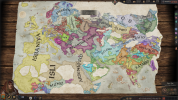 2F0FAEF4-F9FF-49C3-84BC-8B6DFC576459.png4,4 MB · Views: 0
2F0FAEF4-F9FF-49C3-84BC-8B6DFC576459.png4,4 MB · Views: 0 -
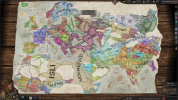 09281832-B0AE-4D97-A4C8-441B57FA77D2.png4,4 MB · Views: 0
09281832-B0AE-4D97-A4C8-441B57FA77D2.png4,4 MB · Views: 0 -
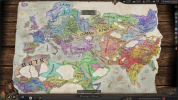 AB64F72A-4D42-446D-A5E0-F192EA8DF670.png4,5 MB · Views: 0
AB64F72A-4D42-446D-A5E0-F192EA8DF670.png4,5 MB · Views: 0 -
 A2E8752D-0904-4241-AF31-ADC887871731.png4,2 MB · Views: 0
A2E8752D-0904-4241-AF31-ADC887871731.png4,2 MB · Views: 0 -
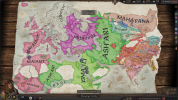 EC9F4690-1AAD-4CA1-92D9-F5EC5A166A8D.png4,4 MB · Views: 0
EC9F4690-1AAD-4CA1-92D9-F5EC5A166A8D.png4,4 MB · Views: 0 -
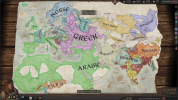 92107F2F-D871-422F-85E3-017E90409EED.png4,3 MB · Views: 0
92107F2F-D871-422F-85E3-017E90409EED.png4,3 MB · Views: 0 -
 3B471B4C-A507-4F71-98CC-93C6949B87DD.png4,4 MB · Views: 0
3B471B4C-A507-4F71-98CC-93C6949B87DD.png4,4 MB · Views: 0 -
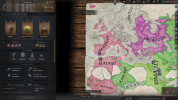 7DA81DF8-563F-4B88-9E83-50095A8FB75E.png3,7 MB · Views: 0
7DA81DF8-563F-4B88-9E83-50095A8FB75E.png3,7 MB · Views: 0 -
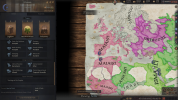 C956A174-7A66-41E1-8821-B95085256BDB.png3,7 MB · Views: 0
C956A174-7A66-41E1-8821-B95085256BDB.png3,7 MB · Views: 0 -
 9E383C66-8138-40CB-BABC-59464EA93300.png3,9 MB · Views: 0
9E383C66-8138-40CB-BABC-59464EA93300.png3,9 MB · Views: 0 -
 8F6EDF01-15C5-4150-A807-8E2BA6453C16.png3,9 MB · Views: 0
8F6EDF01-15C5-4150-A807-8E2BA6453C16.png3,9 MB · Views: 0 -
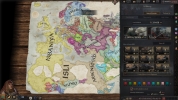 E4EA210B-85C5-4CA2-BAD6-73174696A409.png4 MB · Views: 0
E4EA210B-85C5-4CA2-BAD6-73174696A409.png4 MB · Views: 0 -
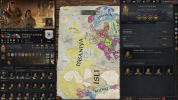 C984D0A3-E8EC-414B-9A9D-192E8E1C24E1.png3,8 MB · Views: 0
C984D0A3-E8EC-414B-9A9D-192E8E1C24E1.png3,8 MB · Views: 0 -
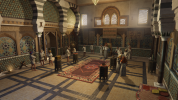 A62CDBD2-9A01-463F-B8C5-35A6AA6EDD06.png4,4 MB · Views: 0
A62CDBD2-9A01-463F-B8C5-35A6AA6EDD06.png4,4 MB · Views: 0 -
 C85A32CA-CC47-45D3-B530-2C0FEF5EC463.jpeg236,4 KB · Views: 0
C85A32CA-CC47-45D3-B530-2C0FEF5EC463.jpeg236,4 KB · Views: 0
Last edited:
- 1

